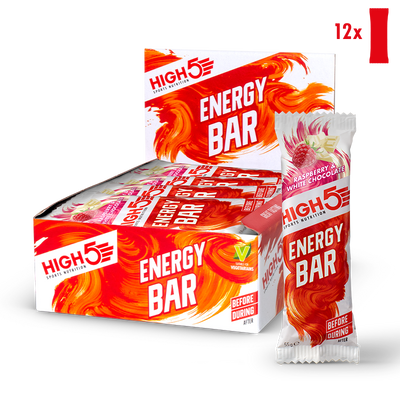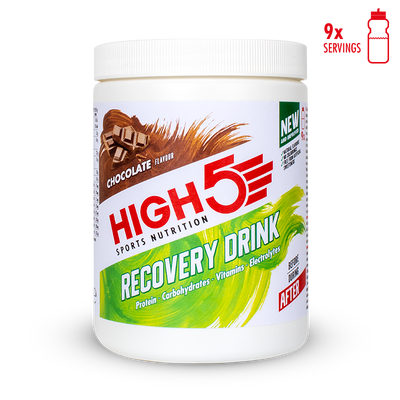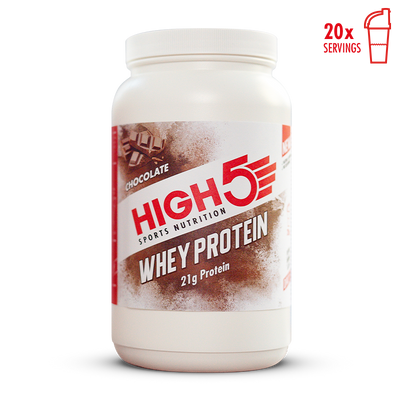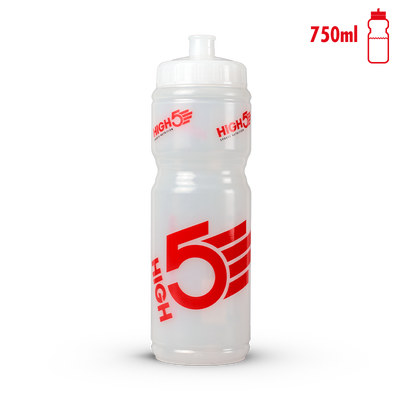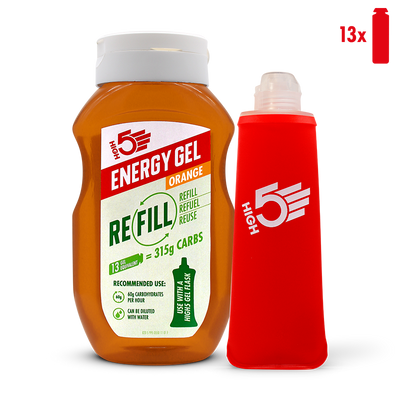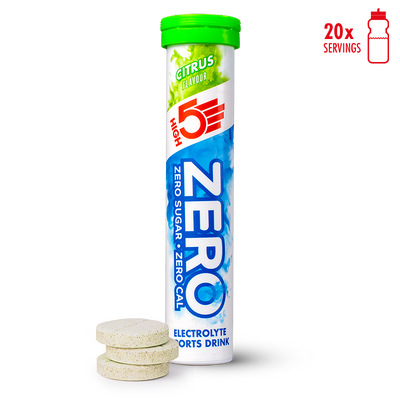Running is a fantastic way to stay in shape and boost your mood. But if you’ve ever experienced a headache after running, then you know how much it can impact your post-workout high. Research indicates that distance runners are about 20% more likely to experience migraine headaches — possibly due to the amount of energy devoted to the activity.
Understanding why exercise-induced headaches occur after running is the first step to finding relief and reclaiming the joy of your runs. This guide explores the triggers of running-induced headaches, prevention tips, and more!
Defining the Concept of Headache After Running
Understanding the specific type of headache you experience after running can help tailor your approach to prevention and management.

One common type of exercise-induced headache experienced by runners is the tension headache after running, which often comes as a dull, aching pain radiating from the neck to the back of the head. The repetitive impact of running can lead to tension and tightness in the neck and shoulder muscles, contributing to these exercise headaches. The jostling motion of running can also cause the blood vessels in the head and neck to dilate, leading to increased pressure and pain.
5 Causes of Tension Headaches After Running
Several factors can contribute to tension exercise headaches after running, including:
- Dehydration: Dehydration is a primary culprit, as inadequate fluid intake can lead to decreased blood volume and a subsequent drop in oxygen and nutrient delivery to the brain, triggering exercise headaches.
- Poor Running Posture: Poor running posture and form can also play a significant role in developing exercise headaches where your head hurts when running or jumping. When your body isn’t correctly aligned and balanced while running, it can increase muscle tension in your neck and shoulders, exacerbating headache symptoms.
- Tight Exercise Clothes: Wearing an exercise outfit that is too tight can have various adverse effects on your body, including triggering headaches after running. (More on this later!)
- Inadequate Warm-Up and Cool-Down Routines: Skipping a proper warm-up can lead to tight and stiff muscles, while failing to cool down after running can result in lactic acid build-up, contributing to post-run headaches.
- Running in Hot Weather: Running in hot weather can lead to dehydration and heat exhaustion, both known triggers for a primary exercise headache.
Understanding these causes can help you proactively prevent a tension headache after running.
How to Prevent and Manage Headache Pain After Running
Preventing and managing headaches after running requires a multi-faceted approach, including:
- Proper Hydration: First, staying adequately hydrated before, during, and after your run is crucial for preventing dehydration symptoms like headaches. Aim to drink water and healthy Energy Gels consistently throughout the day to maintain optimal hydration levels.
- Maintaining Proper Running Posture: Maintaining good running form and posture can alleviate the strain on your neck and shoulders, reducing the likelihood of exercise headaches. Regular stretching and strength training exercises targeting the neck, shoulders, and upper back can also help prevent muscle tension and tightness, helping you become a better runner.
- Pain Relievers: To effectively manage tension headaches after running, consider using over-the-counter pain relievers to alleviate acute pain — but consult your doctor first! Still, it’s important to understand how to prevent exercise headaches without medications by addressing the root causes of the headaches.
- Relaxation Techniques: Deep breathing, meditation, or yoga can help reduce muscle tension and promote overall relaxation, potentially preventing headaches from occurring.
By taking a holistic approach to prevention and management, you may reduce the frequency and severity of post-run headaches. If symptoms persist, we recommend speaking to your doctor!

Hydration and Its Impact on Headaches After Running
When you’re dehydrated, your body has to work harder to maintain normal functions, potentially causing headaches. If you seek how to get rid of dehydration headaches, ensure you’re adequately hydrated before, during, and after your runs.
Incorporating HIGH5 electrolyte-rich fluids and Electrolyte Tablets into your hydration routine can further support headache prevention. Electrolytes such as sodium, potassium, and magnesium play crucial roles in maintaining fluid balance, muscle function, and nerve communication.
Running in Heat and Its Effect on Headaches
Running in hot weather presents unique challenges when it comes to preventing headaches. Increased exertion and high temperatures can lead to rapid fluid and electrolyte loss through sweating, elevating the risk of dehydration and heat-related headaches. Adapting your running approach to the heat and rehydrating fast is crucial to minimise the impact on your body.
Here are some effective strategies for avoiding headaches after running in heat:
- Adjust your running schedule to avoid the hottest times of the day. Early morning or late evening runs when temperatures are cooler can help reduce the risk of overheating and dehydration.
- Wear lightweight, moisture-wicking clothing that can aid in temperature regulation and sweat evaporation, supporting your body’s ability to stay cool and hydrated.
- Regular hydration breaks during your run and consuming electrolyte-rich fluids can help replenish lost fluids and minimise the risk of heat-induced headaches.
Proper Warm-Up and Cool-Down Techniques for Exercise Headache Prevention
A comprehensive warm-up and cool-down routine may be helpful in preventing headaches when running.
A proper warm-up prepares your body for the physical demands of running by increasing blood flow to the muscles, improving flexibility, and reducing the risk of muscle strain and tension headaches.
Do the following:
- Engage in dynamic stretching exercises that target the major muscle groups used in running, such as the quadriceps, hamstrings, calves, and hip flexors.
- Gradually increase your heart and breathing rate through light jogging or brisk walking to prime your body for the run ahead.
Equally important is incorporating a thorough cool-down routine post-run to aid in exercise headache prevention. Cooling down allows your body to gradually return to its resting state, reducing the likelihood of post-run headaches due to abrupt physical exertion.
Do the following:
- Focus on static stretching exercises that target the muscles worked during your run, holding each stretch for 15–30 seconds to promote relaxation and alleviate muscle tension.
- Hydrate and refuel with a balanced snack or meal post-run to support headache prevention. This helps replenish expended energy and nutrients.
Effects of Tight Exercise Clothes on Headaches
When exercise clothes—such as compression shirts, sports bras, or headbands—are too tight, it can create undue pressure on the body. Tight clothes can also increase muscle tension, especially in the neck and shoulders. This added strain can lead to headaches when walking or moving.
To mitigate the impact of tight exercise clothes on post-run headaches, it’s important to prioritise comfort and proper fit when selecting workout attire.
Do the following:
- Opt for moisture-wicking, breathable fabrics with sufficient stretch to allow freedom of movement without constricting the body.
- Choose clothes with adjustable features—such as straps and bands—for an adjustable fit to your unique body shape and size.
- Pay attention to warning signs such as headaches, dizziness, or numbness during or after exercise. If you experience headaches after running in tight clothes, consider switching to looser, more comfortable options to see if the symptoms subside.
Nutrition and Its Influence on Headaches After Running
Nutrition plays a significant role in preventing running with a migraine. Inadequate fueling before a run can lead to low blood sugar levels, contributing to headaches, while insufficient post-run nutrition can delay recovery and exacerbate exercise headache symptoms.
A balanced diet that includes a mix of carbohydrates, protein, healthy fats, and micronutrients is crucial for supporting optimal performance and recovery, reducing the risk of running with exertional headaches.
Doing the following will also help:
- Before Your Run: Your pre-run meal should feature a light meal or snack that delivers a blend of carbohydrates for energy and protein for muscle support, such as our Energy Drink with Protein. This combination helps stabilize blood sugar levels and offers sustained energy during your run, effectively minimizing the risk of exercise-induced headaches.
- Post-Run: Focus on replenishing lost fluids and electrolytes through Recovery Drinks. Also, opt for a balanced meal that includes a mix of carbohydrates and protein to support muscle recovery and alleviate exercise headache symptoms.
By prioritising proper nutrition, you can bolster your body’s ability to withstand the physical demands of running and minimise the likelihood of post-run headaches.
Frequently Asked Questions
How do I stop getting headaches after running?
To stop getting exercise headaches after running:
- Try to drink 235–700 mL of water with Electrolyte Tablets over the course of 1–2 hours before running, and carry a water bottle during your run.
- Have a small meal 1–2 hours before running and a snack within 20 minutes of finishing your run to maintain proper electrolyte balance.
- Avoid extreme temperatures and stay hydrated, get enough rest, and try different exercise routines to help prevent exertion headaches.
Why do I get a migraine after exercise?
You may get migraine after a running exercise due to various factors, including:
- Strenuous exercise
- Overheating or exercising in extreme temperatures
- Increased blood flow to the head, neck, and scalp during physical exertion
If you still experience migraines after exercising despite addressing these likely triggers, it’s a good idea to consult a doctor!
Should I run with a headache?
Running with a headache isn’t advisable as it may exacerbate the symptoms. While there are speculations that exercise can provide headache relief, we recommend addressing the root cause of the headache before going for a run.
Can dehydration cause exertion headaches?
Yes, dehydration can indeed lead to exertion headaches. To help prevent such headaches, it's crucial to stay hydrated by drinking plenty of fluids, especially in hot and humid conditions. Alongside water, replenishing lost electrolytes with Electrolyte Drinks is essential for maintaining hydration levels. Energy Gels can also be beneficial during your run, providing a quick energy boost rather than hydration.
Conclusion
Experiencing a headache after running, headache after walking, headache after football, or headache after cardio can be a frustrating and discouraging experience. By understanding the causes and implementing the strategies in this article, you can work towards preventing headaches during workouts. In a nutshell, prioritising hydration with healthy and nutritious HIGH5 electrolyte drinks, maintaining good running form, incorporating proper warm-up and cool-down routines, and supporting your body with optimal nutrition are great ways to help prevent headaches while running.



